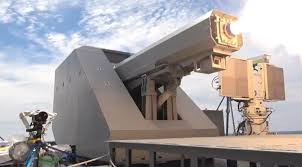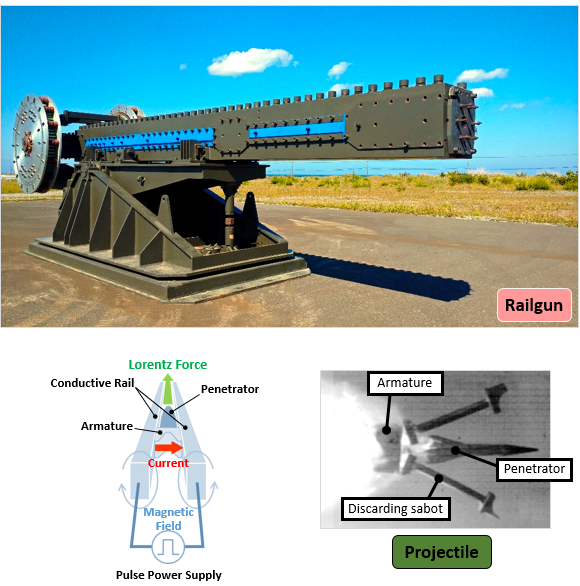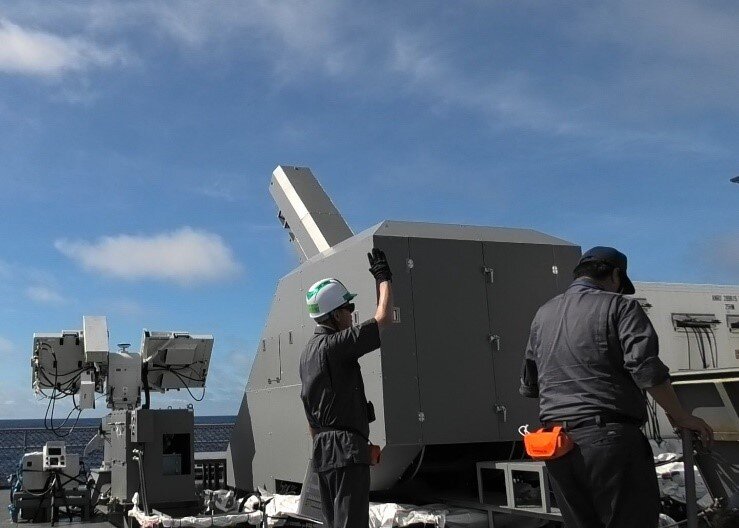
電磁軌道炮:靶艦射擊結果公佈!
・ATLA舉辦2025科技研討會
・有望成為太空運輸工具!
以下是雅虎日本發布的最新消息。

Defense Equipment Agency: Technology Symposium 2025:
The Defense Equipment Agency Technology Symposium 2025 was held on November 11th.
The agency announced an overview of the offshore firing test of the “Electromagnetic Acceleration System (Railgun)” and its results.
1. The railgun test was conducted from June to July 2025 on the Japan Maritime Self-Defense Force’s test ship “Asuka”.
2. Data was obtained in an environment close to actual operation, including the penetration status of the target ship and the ballistic characteristics after firing.

What is an Electromagnetic Acceleration System (Railgun)?
A railgun is a new type of artillery that uses electrical energy to accelerate and fire projectiles.
A large current is passed through two “rails” inside the gun barrel, and current is also passed through the projectile and the rails.
1. The interaction between the magnetic field and the current (Lorentz force) generates, accelerating the projectile at high speed.
2. Compared to conventional gunpowder-based artillery, it can significantly increase the projectile velocity and the amount of warhead that can be carried.

Performance of Japan’s Electromagnetic Acceleration System:
The system achieved an operational record of a projectile muzzle velocity of over 2300 m/s and a barrel life of over 200 shots.
Currently, the agency is establishing the necessary technical elements for operation, such as a rapid-fire mechanism, stable flight outside the gun barrel, and fire control during actual deployment.
Objectives and Implementation System of the Offshore Firing Test
The test was conducted on the Japan Maritime Self-Defense Force’s test ship “Asuka”.
This offshore firing test was a “demonstration test aimed at the early deployment of the railgun.”
The main objectives are as follows:
1. Confirmation of the impact status on the target ship
2. Understanding the ballistic characteristics of the railgun
3. Extraction of issues arising when mounted on a ship
For the test, the railgun prototype developed on land was modified for offshore use.
4. The gun barrel and main body were covered with a shell to protect them from rainwater and seawater spray.
5. The power supply unit was reinforced to withstand installation on a naval vessel.
The system was then mounted on the aft deck of the Japan Maritime Self-Defense Force’s test ship “Asuka” for testing.

Types of tests conducted: Photography and measurement system
The following two types of firing tests were conducted at sea:
Target ship hit test:
The test confirmed “the stable flight of the railgun projectile.”
1. Firing was conducted at a towed target ship, and the impact situation was confirmed using cameras installed inside the ship and evaluation plates.
2. On the Asuka, high-speed cameras, video cameras, and an aerial drone were used for filming.

Ballistic characteristics acquisition test:
In the sea area southeast of Hachijojima Island, flight attitude and trajectory data were collected using a high-speed camera and ballistic radar mounted on the Asuka.
3. All transient ballistic data was acquired from immediately after firing the railgun until just before impact with the water.
4. The railgun was fired under two conditions: 0-degree and 45-degree firing angles.

The test results are as follows:
The tests were conducted in two phases, each lasting approximately one week, in the sea areas south of Nojimazaki and southeast of Hachijojima Island.
Confirmation of penetration into the target ship:
From the camera footage inside the target ship, traces of the projectile penetrating the hull were confirmed.
1. The penetration mark closely matched the shape of the projectile core viewed from the rear.
2. It was found that the projectile “entered the hull in an almost straight line.”

Flight stability:
From the high-speed camera footage on the Asuka, it was confirmed that “the projectile flew stably, similar to the land-based tests.”
Ballistic data acquisition:
1. Under both 0-degree and 45-degree firing angle conditions, actual measurement data regarding separation, attitude change, and trajectory from immediately after firing was acquired.
2. Detailed transient phenomena, such as the separation process at a 45-degree firing angle, were observed. Future Outlook: Development Plan

Lunar Base Mass Driver:
Railgun technology is envisioned as a “mass driver” for future space development.
1. It is considered a promising new transportation method that can electromagnetically accelerate and launch materials.
2. It would be particularly effective for transporting unmanned cargo in environments with low gravity, such as the Moon or Mars.
However, the acceleration is extremely high for human passengers, so its use is likely to be limited to unmanned transport.
Challenges for the Acquisition, Technology & Logistics Agency:
1. There are technical and environmental challenges, including securing a long acceleration track, countermeasures against air resistance, heat and wear, and recovery at the point of impact.
2. We are working to resolve these issues, including achieving rapid-fire capability, realizing a compact, high-capacity power source, and verifying platform compatibility for actual deployment.
https://news.yahoo.co.jp/expert/articles/adc66625511e7234c70000c497f173b5df6ada8d